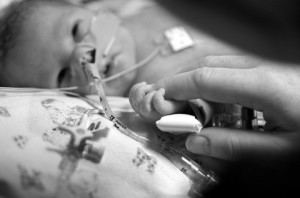Cerebral Palsy Lawsuit Alleges Errors Led to Permanent Disability
 A couple has filed a lawsuit in U.S. District Court in Puerto Rico, claiming a series of medical errors throughout the woman’s pregnancy, labor and delivery led to severe and permanent injuries to their child. The couple is seeking damages from the hospital where the child was delivered, as well as the two physicians that provided prenatal care and oversaw the labor and delivery process.
A couple has filed a lawsuit in U.S. District Court in Puerto Rico, claiming a series of medical errors throughout the woman’s pregnancy, labor and delivery led to severe and permanent injuries to their child. The couple is seeking damages from the hospital where the child was delivered, as well as the two physicians that provided prenatal care and oversaw the labor and delivery process.
The parents of the child filed their cerebral palsy lawsuit on December 19, 2014 in federal court. According to the complaint, the couple began their prenatal care on August 29, 2005, when they were given a due date for their child of June 12, 2006. At the time of the initial visit, the mother plaintiff was 40 years old and had only had one previous pregnancy, which ended in an abortion.
Hypertension missed
Throughout her pregnancy, the mother plaintiff had recorded blood pressure readings at her doctor’s visits that were higher than normal. During pregnancy, a high blood pressure reading is considered a top reading of 140 or higher and a bottom reading of 90 or higher. The plaintiff’s medical records show her blood pressure was documented as above those numbers multiple times between November 14, 2005 and March 29, 2006.
Despite the high readings, the plaintiffs claim fundal height was never taken at any of the prenatal visits. This measurement can track the baby’s growth in utero and is a valuable tool for determining whether normal growth is occurring. In addition, physicians allegedly did not follow up on the high blood pressure readings that indicated chronic hypertension during pregnancy. Chronic hypertension is a serious condition that can lead to pregnancy complications like fetal growth restriction, placental abruption and preterm birth.
Labor induced with Pitocin
On April 7, 2006, the mother plaintiff was given Pitocin to induce labor contractions. At the time, her cervix had begun to dilate and fetal heart rate had decelerated. Pitocin was continued throughout the day until the mother plaintiff delivered her baby at 4:09 in the afternoon of April 7. At the time of birth, there were signs of placental abruption, a condition in which the placenta prematurely pulls away from the wall of the uterus. The baby was also small at only 33 weeks gestational age and weighing in at three pounds, 13 ounces.
Risk factors for placenta abruption include an advanced maternal age of 40 or older and high blood pressure during the pregnancy. This condition can be dangerous for the baby, increasing the risk of premature birth and oxygen deprivation during labor and the delivery process. Oxygen deprivation can lead to permanent, debilitating conditions like cerebral palsy.
Lawsuit alleges birth trauma caused by negligence
The plaintiffs state in their complaint that after their baby was born, she suffered numerous complications, including respiratory distress, jaundice and sepsis. The child has now been diagnosed with cerebral palsy and is severely and permanently disabled. As a result, the child will require a lifetime of special care and will never be able to care for herself without assistance.
The plaintiffs allege that failure to properly address high blood pressure during pregnancy, failure to diagnose placenta abruption and failure to perform a timely C-section delivery all led to their daughter’s injuries. They claim that they have not been able to give their daughter the quality care she needs due to limited financial resources. The plaintiffs are now seeking damages from the hospital and physicians to compensate them for past and future medical treatment and care of their child. Physical, emotional and economic damages are estimated by the plaintiffs to be $10 million, which also includes the lifelong care their child will require.
- Mayo Clinic, Placental Abruption, http://www.mayoclinic.org/diseases-conditions/placental-abruption/basics/definition/con-20024292
- National Institute of Neurological Disorders and Stroke, NINDS Cerebral Palsy Information Page, http://www.ninds.nih.gov/disorders/cerebral_palsy/cerebral_palsy.htm
- Baby Center, Chronic Hypertension during Pregnancy, http://www.babycenter.com/0_chronic-hypertension-during-pregnancy_1427404.bc
- Stanford Children’s Hospital, Birth Injury, http://www.stanfordchildrens.org/en/topic/default?id=birth-injury-90-P02340

 Resources
Resources
 Resources
Resources

